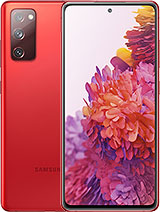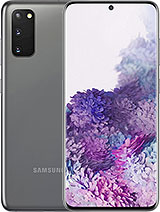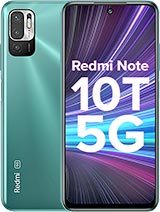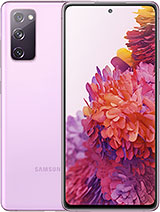Samsung Galaxy S20 FE 5G vs Xiaomi Mi 10T Pro 5G - Snapdragon 865 Smartphone Comparison By Tech Travel Geeks
Thank you to everyone who voted in our social poll here on YouTube and as a result of that vote. This is the first of two comparison: videos we'll be releasing this week. This is the side by side comparison between two snapdragon 865 chipset devices, the Xiaomi me 10, t pro 5g and the Samsung Galaxy s20 Fe 5g. If you don't already, please do subscribe to the tech travel geeks here on YouTube right then. So in late 2020, these two devices were released and have been selling very, very well across the world. Both the devices features Qualcomm snapdragon 865 chipsets and are not full flagships, but very close and for most consumers, in my view, deliver amazing value for money right then, let's start off looking at the two devices Samsung and Xiaomi in the second half of 2020, these were the sort of more affordable flagships with many of the main flagships features uh into sold at a very affordable price.
The Samsung Galaxy s20 Fe came in a nice range of colors and in the 5g version, had the better chipset of 2020. That's the snapdragon one, whereas the meat NT pro 5g. Just had that there were less storage options to choose from, but overall delivered amazing value for money. The way they reached this price point, and they started selling well, is different. Both devices may have that chipset in common, but differ very, very much in the rest of their feature set.
You can start by looking at the build the Samsung Galaxy s20 Fe 5g is a lovely device, but it has a glass front, as you would expect, from a smartphone in 2020 and 2021. The aluminum frame is there as you'd expect of a flagship and a high quality device in 2020 and 2021, but the back is plastic or, as Samsung call it in their marketing campaigns. Sometimes it's plastic. So it's made to look like some matte glass, similar to what we saw on the Huawei p40 in 2020, but it is in fact plastic which obviously reduces the cost of the device, but more importantly, makes it much, much lighter, whereas with the Xiaomi mi 20 pro 5g, you have this mirror-tastic wonderful glass device, so it is glass, specifically gorilla glass 5. On the back and more importantly, it's gorilla glass 5 on the front.
The industrial design is significantly chunkier and heavier on the 20 pro 5g and there's a few reasons for that. It's not just the glass. More importantly, it's the battery, the Xiaomi mi 20 pro 5g has a 5 000 William hour battery inside that glass sandwich body with an aluminum frame, whereas the Samsung Galaxy s20, Fe 5g, goes for a slightly less capacious 4500 William hour battery, so slightly smaller battery plastic back makes the device slimmer and lighter. So there are two similar approaches but different, and what I would say is that it is noticeable the difference between the two battery lives if you're doing fast charging, so not so much in day-to-day use. Getting from the beginning of the day, to the end of the day, both devices will comfortably do that, even when I'm using them heavily.
The different main difference is how quickly you can top up and charge so the Xiaomi mi 10 t pro 5g is a device that features Xiaomi's new 33 watts fast charging, and it is truly astounding. Essentially, this phone can charge from practically empty to almost full in just under an hour, and I have tried this out myself a few times when I've left it unplugged for a few days, and it's been close to shutting down because it's under five percent battery I can plug it in and have it a hundred percent in an hour. So it's really, really impressive how that works, and it does that using Xiaomi's own orange and white charger that we saw in the unboxing and setup of our smartphone, whereas the Samsung s20 Fe 5g. It has fast charging, but it's only 25 watt fast charging. It does work with power delivery, but it's not the fastest charging out there, so smaller battery slower charging, then again for most people.
As I said at the beginning, these two phones will get you through the day uh, even in slightly heavy use. So that's the key things in industrial design on the back, so we've talked about the build quality, the materials and the and the battery. So two differences. The meter 10t pro 5g is chunkier and heavier, but offers a slightly better battery and its charging capabilities. The s20 Fe 5g is a much lighter and more handleable device.
Now, let's switch over to the front of both devices. Both devices have nice, big screens and what we're going to do is look at them side by side with the lighting in this room. It's difficult to make it clear here, but there's a key difference between the two screens. It's not just the minor difference in size. The Xiaomi mi 10 1080 pro 5g is a 6.67-inch screen. So it's slightly bigger in its diagonal.
The was the s20 Fe 5g in this case is a 6.5-inch screen, so it's slightly smaller, but overall, the footprint is similar, but the s20 Fe 5g is a slightly smaller screen slightly smaller body. It is noticeable when there's side by side as I've placed them here now. These are two lovely screens. Most people wouldn't really notice much of a difference, even with this parish background that I have on both of them. But the key difference is the technology.
It's completely different. The s20 Fe 5g has a lovely AMOLED screen, so it is a 1080 by 2400 pixel display, but it's a super AMOLED, it's Samsung's own uh own screens, and it's also 120 hertz refresh rate. It is a very, very fast refresh rate, as well as supporting HDR 10 plus, whereas the meat NT pro 5g, probably to keep the price down, is using a high quality IPS lcd it's actually a faster refresh rate. This is 144 hertz, refresh rate, and it supports hdr10, but it's not got that same infinite. Contrast ratio that the super AMOLED display has on the Samsung s20 Fe 5g in day-to-day use, they're both great smartphones, whether you're using this phone heavily for productivity or whether you're using it for gaming, both are very, very responsive.
Both are lovely in terms of how they handle colors and dealing with media, in particular with video. If both I enjoyed using both devices very much in that way. So that's a very quick highlight of the displays. Now. Let's look at the corners of the display, because both devices I'll probably need to find something with a white background here.
Uh, both devices have lovely displays and both of them have in this case, I'm going to turn off dark mode. Oh, it doesn't switch off. Let me do this here. It doesn't work anyway, there's a punch hole display as it has a hole or a dodge for the selfie camera in the top left-hand corner of the display for the Xiaomi mi 20 pro 5g, whereas if we look at the Samsung s20 Fe 5g, the punch hole for the selfie camera is in the middle of the screen, as we saw in other Samsung devices previously. So in usability terms, there's not much of a difference each to their own, whichever you prefer.
Some people prefer the punctual in the middle. Some people prefer on the left. The key takeaway is that there isn't a full notch here that space at the top of the screen can still be used for notifications and speaking of notifications, you can see a clear difference in the UX when you pull down that notification slide. The reason for that is that these are two different smartphones from two different smartphone companies. They each have their android distribution based on android but which they've made their own, and they behave differently so, for example, just in the notification space, if I pull down on the left hand, side of the screen you'll see that you have your notifications, but if you pull down further, that's it there's nothing there.
This is on very iPhone, like behavior, because if you swipe down on the right hand, side of the screen you'll get your control center, whereas with Samsung you have something more traditional like android, where, if you pull down on the left hand, side or on the right hand, side you'll always have the same notifications. That means that if you pull down again you'll get your quick settings all in the one place you don't have to be left-handed or right-handed to reach across and get things each to their own. I actually prefer the more traditional android way of doing that. In that respect. Now both devices have app drawers.
You can keep your apps here. If you want to you, can in the settings disable the app drawer both on mini, the Xiaomi android distribution and on one UI or one wiz for those of us who have been using android for about a decade, touch wiz used to be the predecessor to Samsung's android distribution called one UI. I will always call it one wiz anyway, let's go into the settings and have a look at how they differ. Both are quite cartoonish, as in the bright colors, big icons, easy to use easy to access Samsung. One UI is generous in its use of space in big letters.
Big content and, I would say, is more cartoonish than me. UI with its default theme on this is pretty straightforward throughout the operating system. It's all very, very similar, now the difference being quite minor in how things are laid out or placed, but I would say that mini, so Xiaomi's, android distribution, in my view, is a much nicer version of android to play around with in terms of what the settings look like. How they're set up it's not only more colorful but much more straightforward, whereas Samsung seems to fall into a cartoonish exterior in the thing in the main part, but then it falls into a very sort of dry, not refined or consistent version of android. In my opinion, compared to mini, I think mini has come on leaps and bounds in the last few years, and it has really given that extra level of polish, but that's just my opinion, each to their own uh.
You may have a different opinion. If so, let us know in the comment section below anyway um. The key thing here is that, though mini is more refined, this Xiaomi mi 10t pro 5g, is still running android 10, and we're in the latter part of February 2021, it's android 10 with mini 12. , whereas the Samsung Galaxy s20 Fe 5g, is already running android 11 under the hood, with the one UI 3.1. It's not one UI 3.5 yet, but apparently that's coming soon, so in terms of operating system, how they behave, they're very similar, yet very different, and you may have a personal preference towards one or the other, but rest assured that most applications and services don't get affected at all by that. So, if you're someone who lives on facebook, Twitter Instagram, those apps will carry on working as expected, the same with your messaging apps, your media apps, whether you're using telegram WhatsApp.
All those will work as expected. Now that once we're talking about apps, I have to say one thing: both these phones come from large smartphone companies who monetize their products slightly differently, yet both of them have their own versions of pretty much every core application to your smartphone, whether that's the dialer. It's the text messaging app, the app store, your various apps that are key to the device both have their own ones and double up. Both these devices purchased in the UK in the latter part of 2020 have Google Play Services and have access to the Google Play Store, and sometimes the Samsung apps overlap in terms of functionality. The Google ones and the same with the mini ones overlap the Google ones, so there is a bit of duplication there.
I would say: Samsung is much worse in terms there's a lot in terms of there being a lot of different apps there. So we've looked at the key things about software apps, the screens they're, both lovely devices to use, as I've said, I've been using both devices heavily and often in one day. They'll get me through the day. One of the key reasons I've been using both phones. A lot is that the cameras are great.
Cameras are really important to me. I like taking pictures of my cats of going for walks and taking lots of pictures. It's just something that I'm continuously impressed by is smartphone camera technology, and both these devices offer great cameras both on the front and the back now on paper. Both phones have decent setups, the Samsung Galaxy s20 Fe 5g has three cameras on the back. You'll see the three here in this camera module it's not particularly exciting, but what they have in their bodies is, in this case a 12 megapixel uh main sensor.
An 8 megapixel telephoto sensor and a 12 megapixel ultrawide sensor, so it has those three cameras that do all the key work. So what that means is that you have a perfect 12 megapixel main sensor uh. It takes nice, clear pictures, uh we'll be covering that in the full long term review soon here on the tech travel geeks YouTube channel. It also has an eight megapixel telephoto sensor, which means that it can take three times: optical zoom shots without losing much quality, they're, really nice and clear pictures and the wide-angle lens uh in this is a 12 megapixel one as well so overall, great camera setup and if you're not too worried about specs and what they look like on paper. They take perfect pictures.
It's difficult to take a bad picture. Arguably you'll get better cameras for from something like a Google Pixel, but these are on par, if not actually better than what you'll find on an equivalently priced iPhone such as the iPhone 12. Whereas over on the left, we have the Xiaomi mi 20 pro 5g, which does try and play the numbers game a little and that's because the main sensor, this giant one that you'll see here. Yes, that's a 108 megapixel sensor. This lets in a lot of light.
It has a big sensor, and it is really, really good um. This, then also has a 13 megapixel ultra-wide sensor, as well as a 5 megapixel macro sensor. Now I am not a fan of macro cameras, dedicated micro cameras on smartphones, and you'll have heard me in other videos complaining about that quite a lot. In this case, though, I have to say, Xiaomi have done a good thing, because that five megapixel micro camera isn't just a fixed focus macro camera. It has autofocus, which is a real game changer.
This is one of the few macro smartphone cameras I actually enjoy using, and I have to say that that's hats off to Xiaomi. That is a really impressive feat for someone who comes from a background of using macro cameras and being disappointed. I was very pleasantly surprised by that. So those are the three main cameras. Obviously there's optical image, stabilization on the main sensors in this case, there's also optical image, stabilization on the other sensors.
It's a great overall device, the snapdragon 865 chipsets we were talking about both devices have is used differently and the reason for that is that both of them have different cameras, and they're softer their android distributions differ slightly, and that means that the Samsung Galaxy s 20 Fe 5g in this case can only take video, can record video at 4k. So that's potentially what you're watching this video in 4k at 30 or 60 frames per second, whereas the Xiaomi mi 10t pro 5g, can, if, if you set it to do that record in 8k at 30 frames per second now, whilst that's all great um, I haven't found any use for this, but our chief aperture officer Lucas. He might actually be able to use that when filming and then using that digital crop to get 4k real 4k video out of that 108 megapixel sensor in video, but that takes up a lot of storage and is potentially something that will overheat your phone when you're doing that, but it is still capable of recording 4k at 30 or 60 frames per second, and it's really a good camera for video, as well as pictures between the two. Obviously, the Xiaomi me 10 10t, pro 5g has both hardware and software, which, in my opinion, are superior to the galaxy s20 Fe 5g, but that's just a matter of opinion. In terms of you ease of use, the Samsung is closer to the point-and-shoot experience that you get on a pixel or an iPhone smartphone, whereas the Xiaomi is a bit more nuanced and if you take the time to frame your shot or playing around with the settings is capable of a lot more now I mentioned the software and the camera and how all that interacts.
It is really, really important in a modern smartphone, especially when dealing with these features. So video is important because it stores a lot of of of data when you're, recording video and that's a key difference between these two smartphones, the Xiaomi mi 20, pro 5g in the format I purchased it in comes in the 128 gigabytes storage, with 8 gigabytes of ram, that's non-expandable storage, so 128 gigabytes is usually plenty, but if you're recording 8k video that fills up pretty, pretty fast. Sadly, the 10 t pro 5g is not expandable. You can't use a memory card for that, whereas with the Samsung s20 Fe 5g, you have expandability, you can use a micros card and expand that with up to an extra 256 gigabyte cards. So that's really quite good.
The version I purchased of the s20 Fe 5g here in the UK from the Samsung store, is six gigabytes of ram, so not eight like we have on the shall we and 128 gigabytes of storage, but in day-to-day use. I have not noticed a difference. There are no slowdowns or lags on the Samsung compared to the Xiaomi. Both devices are really, really good in terms of their user experience, their performance, whether under stress gaming, video, editing, taking and editing pictures both of them perform really well and unless you're running benchmarks, I would not notice a difference between the two in terms of connectivity. Both of them have 5g, that's part of their names.
Samsung Galaxy, s20, Fe, 5g Xiaomi me 10t, pro 5g. Both of them are a bit of a mouthful, especially that 5g at the end, we'll let you wrap up, wrap out to the 5g music video we produced a couple of years ago at NFC, but all joking aside, both of them perform very well on 5g. I've tested both of them on Vodafone, 5g and 35g here in the UK, and both of them get excellent speeds when that connectivity is available. One last feature that I think is important to call out, apart from the usual Bluetooth, 5 and 5.1, the fact that they have connectivity for services such as payments using NFC, so near field communication, you can use both phones for Google Pay in the UK. Both of them have worked great.
The key difference is the Samsung s20 Fe 5g has a FM radio, whereas the meat NT pro 5g doesn't so just one little thing to be aware of. Sadly, both devices don't have courage, ports, uh, one last thing in terms of usability is where the fingerprint scanner is so on the s20 Fe 5g. It's in screen it's an optical one, which means it blasts light out at your finger to unlock, whereas with the meat NT pro 5g. It's a side mounted one as we've seen in quite a few devices in 2020 from Xiaomi devices, we've reviewed, such as the Poco x3 NFC, the Redmi Note, 9s and others anyway. Both are great smartphones.
Both will do most users more than enough for their needs, and if you don't look at the spec sheets, both are pretty equivalent. There is a price difference. The Xiaomi mi 10 t pro 5g is less expensive than the Samsung Galaxy s20 Fe 5g, ultimately you're paying a little extra for the Samsung brand, and they're two different devices in similar category, which offer amazing value for money. At this point in early 2021, I don't think there's any real advantage to spending an extra few hundred pounds for the real flagships when you get so much value from these devices in this price category for context in the UK at the moment, the s20 Fe 5g is around about 600 pounds, whereas you can get the meat NT pro 5g for as little as 400 pounds, so both really great value for money, and it's great to be in a world where you get such value from today's smartphones and in terms of durability and reliability. In my personal opinion, Samsung and Xiaomi are two of some of the best brands on the market.
They both also have some pretty good support networks. If anything were to go wrong, so um two devices running Qualcomm, snapdragon 865 chipsets, which one do you think is better. Let us know in the comments if you have voted in our poll. Thank you for having done so, and if you don't already, please do subscribe to the tech travel geeks here on YouTube. We're going to wrap up this video now, thank you for watching and goodbye from me.
You.
Source : Tech Travel Geeks








![Oppo F19 Pro+ vs OnePlus Nord Speedtest [Dimensity 800U vs SD765G]](https://img.youtube.com/vi/fjFs27DBHVo/maxresdefault.jpg )




















